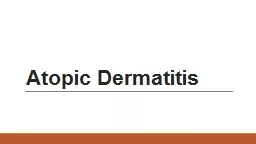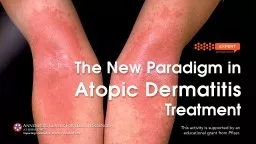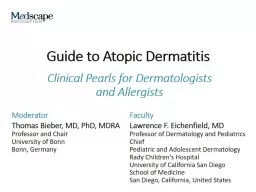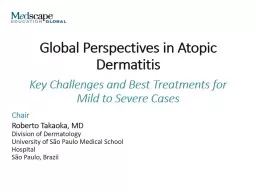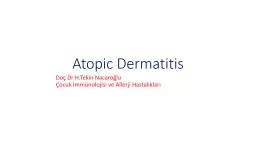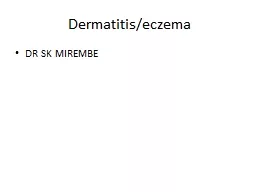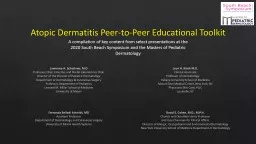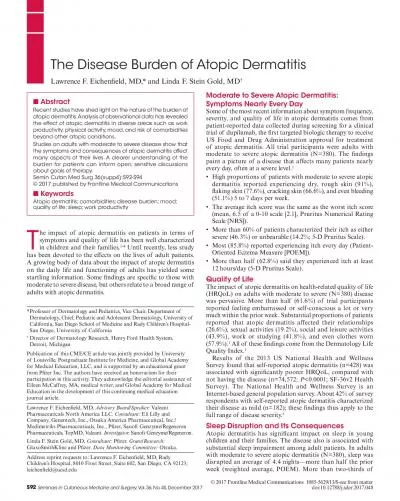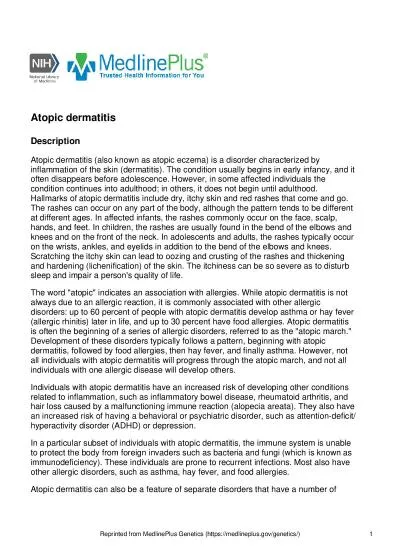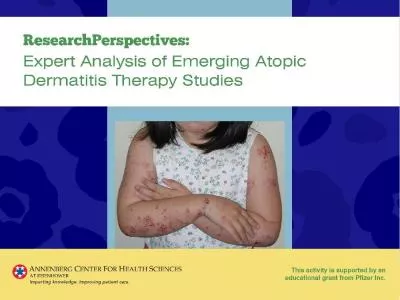PPT-Atopic Dermatitis ■ An acute,
Author : SultrySiren | Published Date : 2022-08-04
subacute or chronic relapsing skin disorder Very common in infancy Prevalence peak of 1520 in early childhood Dry skin and pruritus lichenification
Presentation Embed Code
Download Presentation
Download Presentation The PPT/PDF document "Atopic Dermatitis ■ An acute," is the property of its rightful owner. Permission is granted to download and print the materials on this website for personal, non-commercial use only, and to display it on your personal computer provided you do not modify the materials and that you retain all copyright notices contained in the materials. By downloading content from our website, you accept the terms of this agreement.
Atopic Dermatitis ■ An acute,: Transcript
Download Rules Of Document
"Atopic Dermatitis ■ An acute,"The content belongs to its owner. You may download and print it for personal use, without modification, and keep all copyright notices. By downloading, you agree to these terms.
Related Documents

